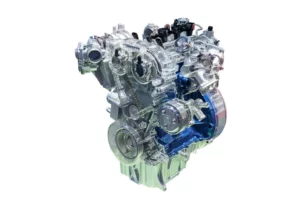The Heart of 4WD: Demystifying the Transfer Case

For off-road enthusiasts and adventurous drivers, the transfer case is an essential component that makes the 4-wheel drive (4WD) system come to life. Yet, for many, it remains a mystery hidden beneath the vehicle’s surface. In this blog post, we’ll unveil the world of transfer cases, exploring their significance, how they function, types, common issues, maintenance tips, and why professional auto service is crucial for keeping your 4WD system operating smoothly.
The Significance of the Transfer Case
The transfer case is significant for several reasons:
- Power Distribution
It splits engine power between the front and rear axles, enabling 4WD. - Traction
Transfer cases improve traction on slippery or uneven terrain. - Off-Road Capability
4WD vehicles can conquer challenging terrains with a functioning transfer case. - Versatility
Drivers can switch between 2WD and 4WD modes as needed.
How the Transfer Case Functions
The transfer case operates through various components:
- Drive Shafts
Transmit power from the transmission to the axles. - Gears
Inside the transfer case, gears determine the power distribution. - Modes
Most transfer cases have 2WD, 4WD High, and 4WD Low settings. - Shift Lever
The driver controls the mode selection through the shift lever.
Types of Transfer Cases
There are two main types of transfer cases:
- Part-Time 4WD
These transfer cases are manually engaged and disengaged, typically for off-road use. - Full-Time 4WD
In full-time 4WD vehicles, all wheels receive power continuously, improving traction on various terrains.
Common Transfer Case Issues
Over time, transfer cases can encounter problems, including:
- Fluid Leaks
Leaking transfer case fluid can result in reduced functionality. - Overheating
Overheating can lead to transfer case damage and failure. - Strange Noises
Unusual noises may indicate gear or bearing problems. - Failure to Engage
Difficulty engaging 4WD mode can be a sign of transfer case issues.
Maintenance Tips for the Transfer Case
To ensure your transfer case operates optimally, consider these maintenance tips:
- Regular Inspections
Include transfer case checks during routine maintenance. - Fluid Changes
Regular fluid changes are essential for transfer case health. - Use Correct Lubricants
Ensure the use of recommended fluids and lubricants. - Professional Inspection
Consider professional auto service for comprehensive transfer case inspections.
Why Professional Auto Service Matters
Professional auto service is essential for transfer case maintenance and repair because:
- Expertise
Skilled technicians understand transfer case systems and related issues. - Diagnostic Tools
Auto shops use specialized tools for accurate inspections. - Quality Parts
Reputable providers use high-quality replacement components. - Safety
Proper maintenance ensures safe and reliable 4WD operation. - Preventative Care
Professionals can detect transfer case problems before they become major issues.
The transfer case is the heart of your 4WD system, offering the power and versatility to conquer diverse terrains and enhance your driving experience. Understanding its significance, recognizing signs of issues, and adhering to maintenance schedules are vital for responsible 4WD ownership. However, entrusting transfer case maintenance and repairs to professional auto service providers is the key to ensuring your 4WD system stays strong, allowing you to explore new horizons with confidence and peace of mind.











